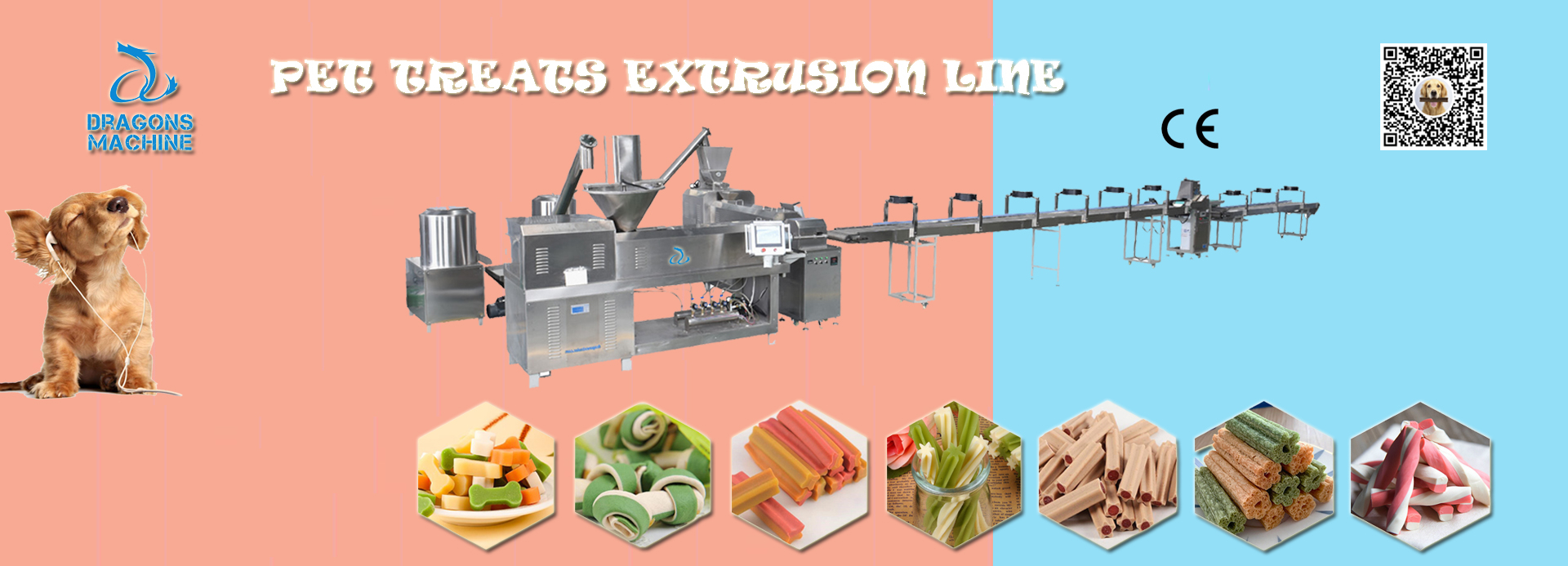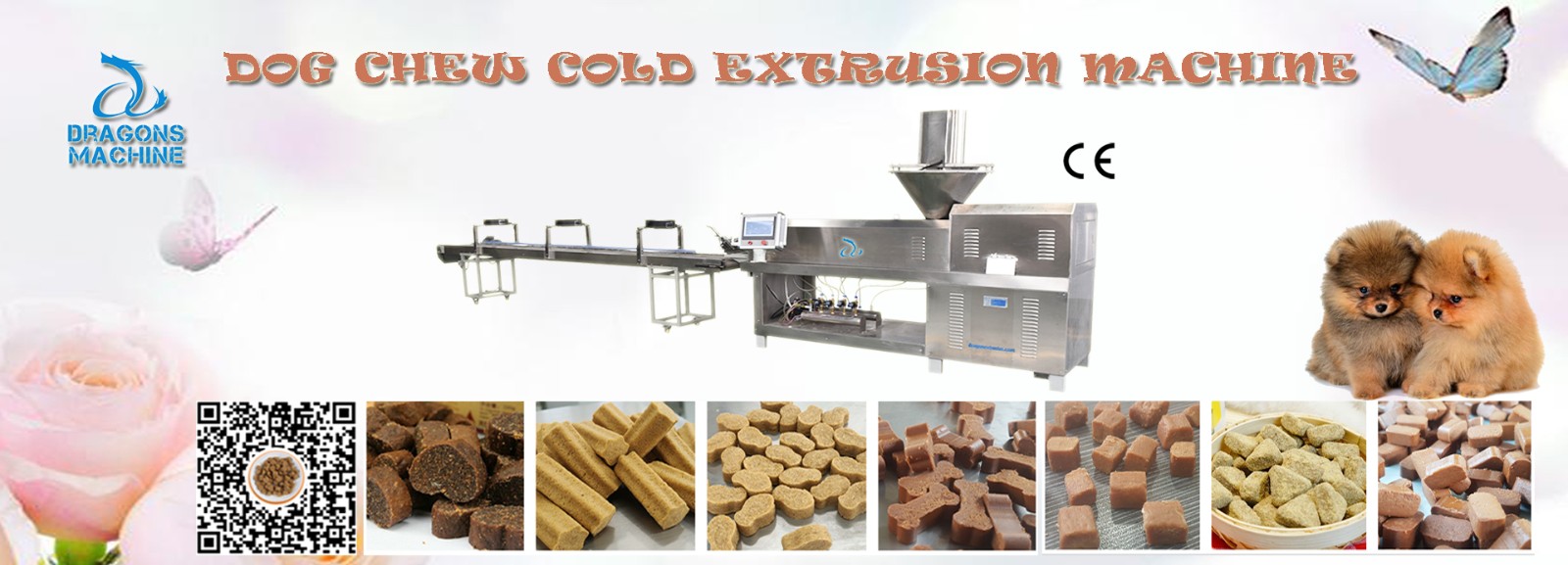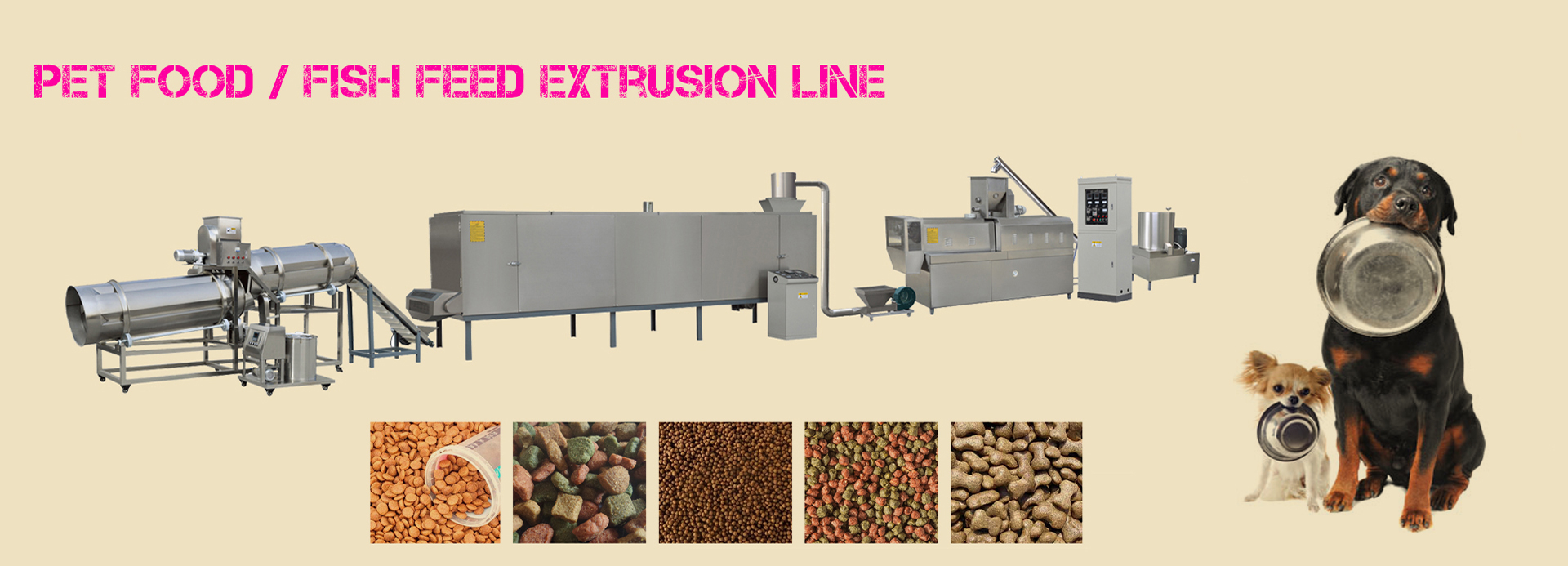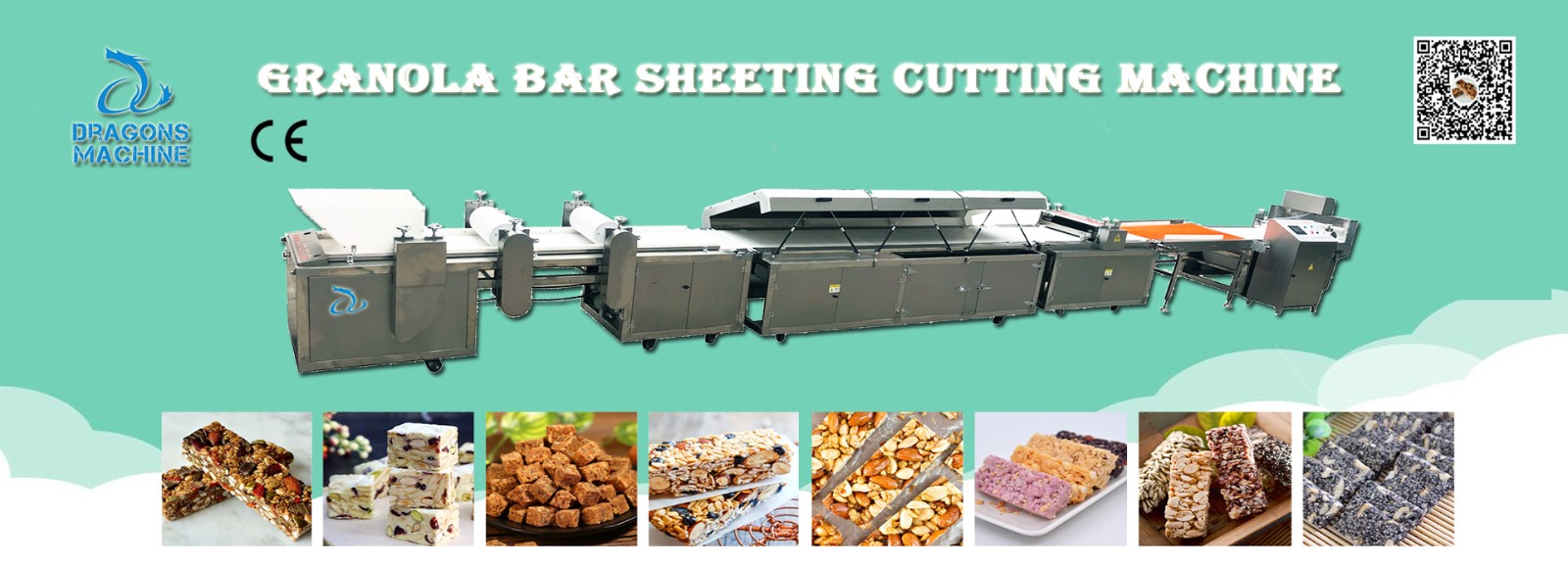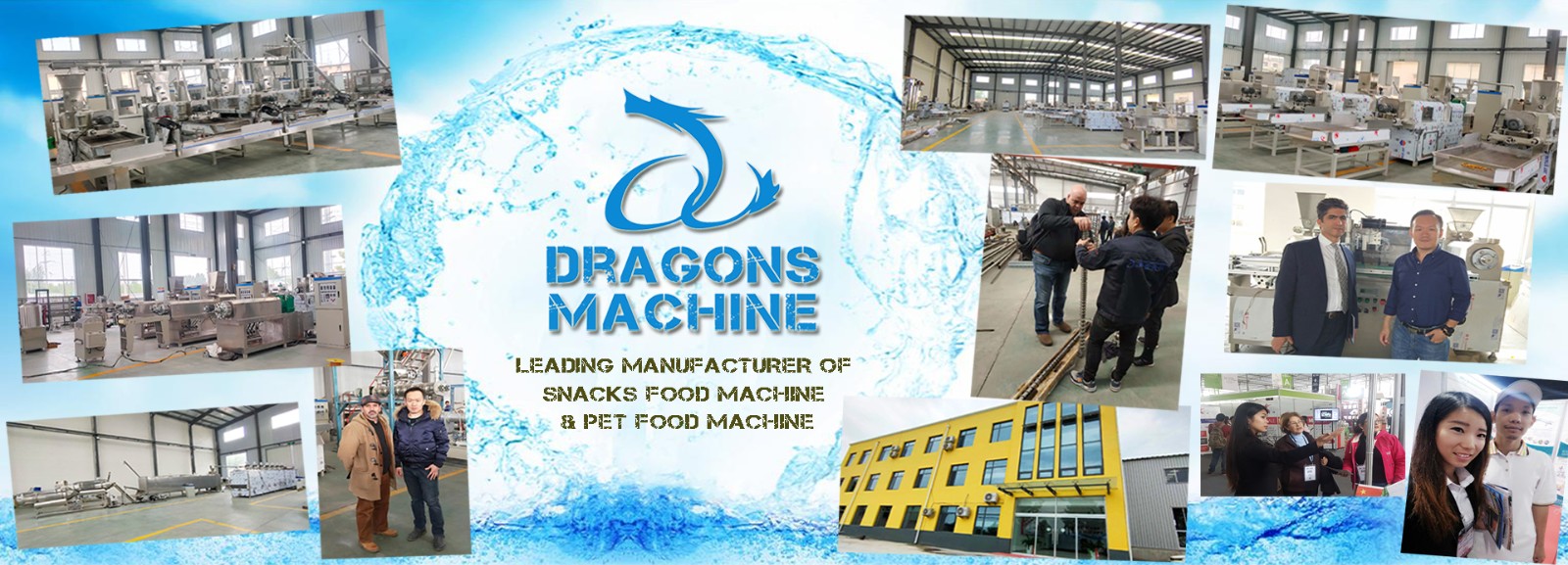♦ Pelleted feed quality generally influence by the quantity of fat, fiber and starch in the formula. Some ingredients, due to chemical or physical properties, will lower the pellet resistance to crumbling and water stability.
♦ Additives that primarily treated as pelleting aids are frequently used in fish feed formulas to reduce fines and improve water stability.
♦ In pelleting process, steam can be added into ingredients for starch gelatinization, which is conductive to ingredients binding.
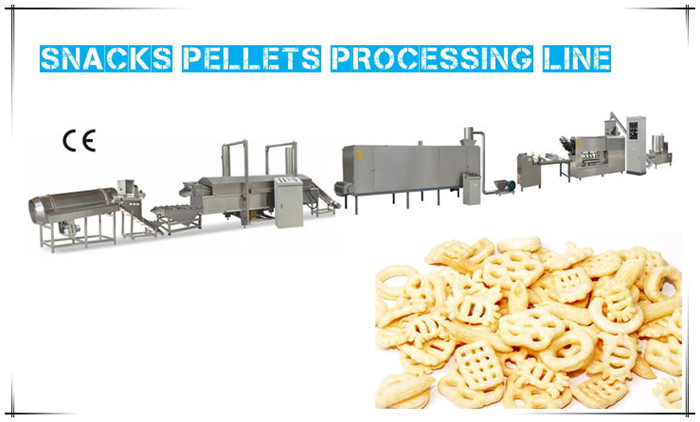
About Extruded Pellets
Extrusion is a high temperature short time heating process, it minimizes the degradation of food nutrients while improving the digestibility of protein and starches. Pet feed extruder is an ideal machine that designed for processing floating or sinking aquaticfeed just by adjusting the formula. Extrusion requires higher levels of moisture, heat, and pressure than pelleting. Temperature higher than 100℃ is needed in order to achieve expansion of the feed as it leaves the die. Extrusion consists of wet extrusion and dry extrusion. The high temperature in dry extrusion is acquired through dissipation of mechanical energy from heated surfaces such as barrel and screw surface, or generated by shear forces between wall and material and screw and material. For wet extrusion, the temperature is achieved through preconditioning and steam injection. At the same time the material also undergoes relatively high pressure. The pressure difference in the interior of extruder and the external environment will cause the extrusion of the aquatic feed. As the material is squeezed through die holes at the end of the extruder barrel, part of the water in the superheated dough immediately vaporizes and causes expansion. The popular machines for pellet extrusion are wet type pet feed extruders and dry type pet feed extruders.
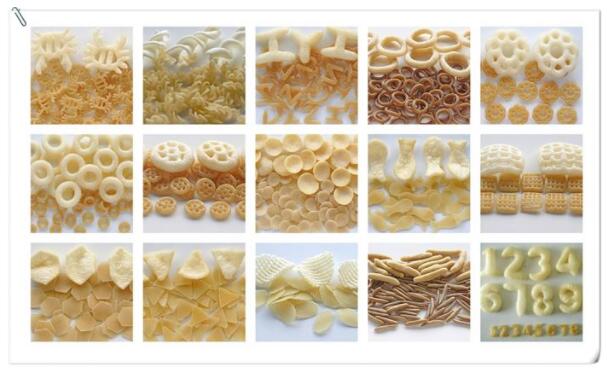
About Pelleting Pellets
Pelleting is the process to compress small particles into larger solid with a given shape and texture, which involves the combination of moisture, heat and pressure. These larger homogenous particles agglomerating from small ingredients are also called dense pellets that sink rapidly in water. The aquatic feed pellet mill is the professional feed pelleting machine for pelleted aquafeed making.
The main factors affecting pelleting are ingredients characteristics, moisturizing or steaming before pelleting, die thickness and binders ect.
♦ Pelleted feed quality generally influence by the quantity of fat, fiber and starch in the formula. Some ingredients, due to chemical or physical properties, will lower the pellet resistance to crumbling and water stability.
♦ Additives that primarily treated as pelleting aids are frequently used in fish feed formulas to reduce fines and improve water stability.
♦ In pelleting process, steam can be added into ingredients for starch gelatinization, which is conductive to ingredients binding. Generally, an amount of steam is added to the mash to increase its moisture content to approximately 16% and temperature to about 85 ℃ before passing through the pellet die.
Extruded Pellets Vs Pelleted Pellets
| Performance | Extruded feed | Pelleted feed |
| Bonding degree | Strong | Strong |
| Floating and sinking | Beneficial | Just sinking |
| Stability in water | Better | Good |
| Fines in aquafeeds | fewer | Few |
| Nutriment digestibility | Higher | Lower |
| Funding | Bigger | Smaller |
| Processing cost | Higher | Lower |
| Equipment wear | Slower | Quicker |















